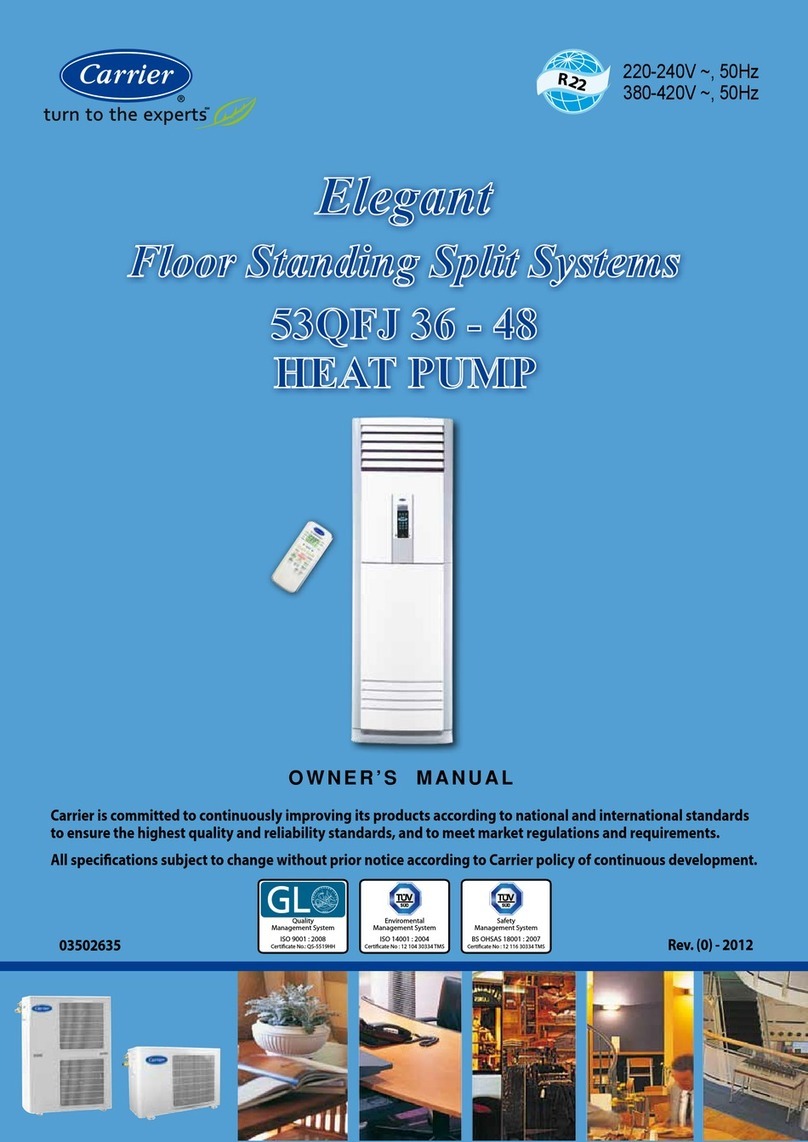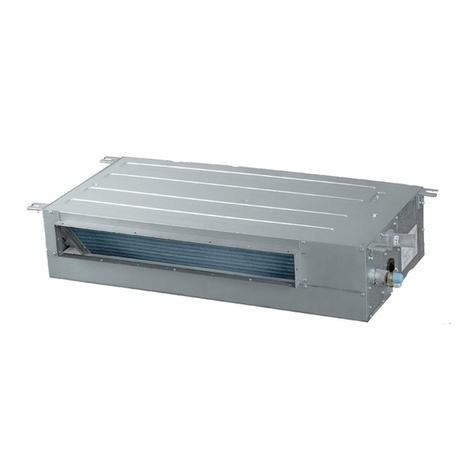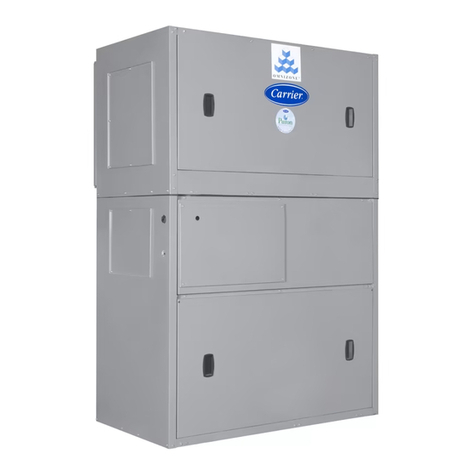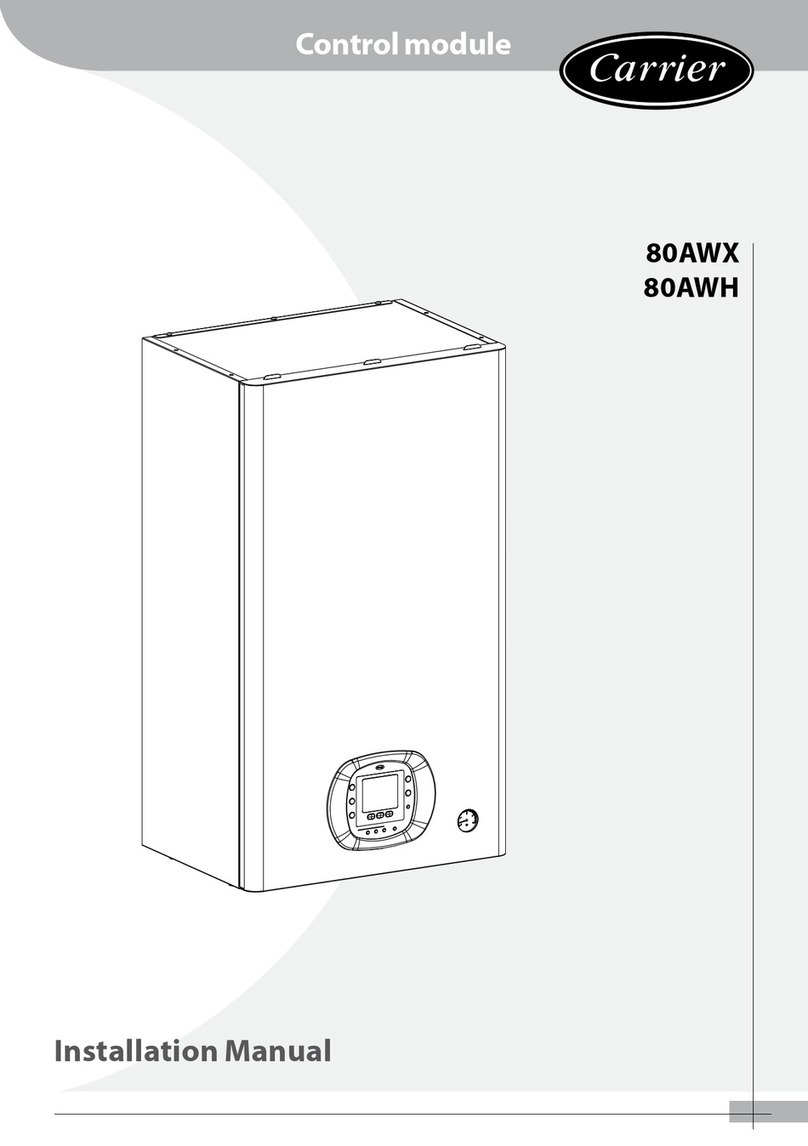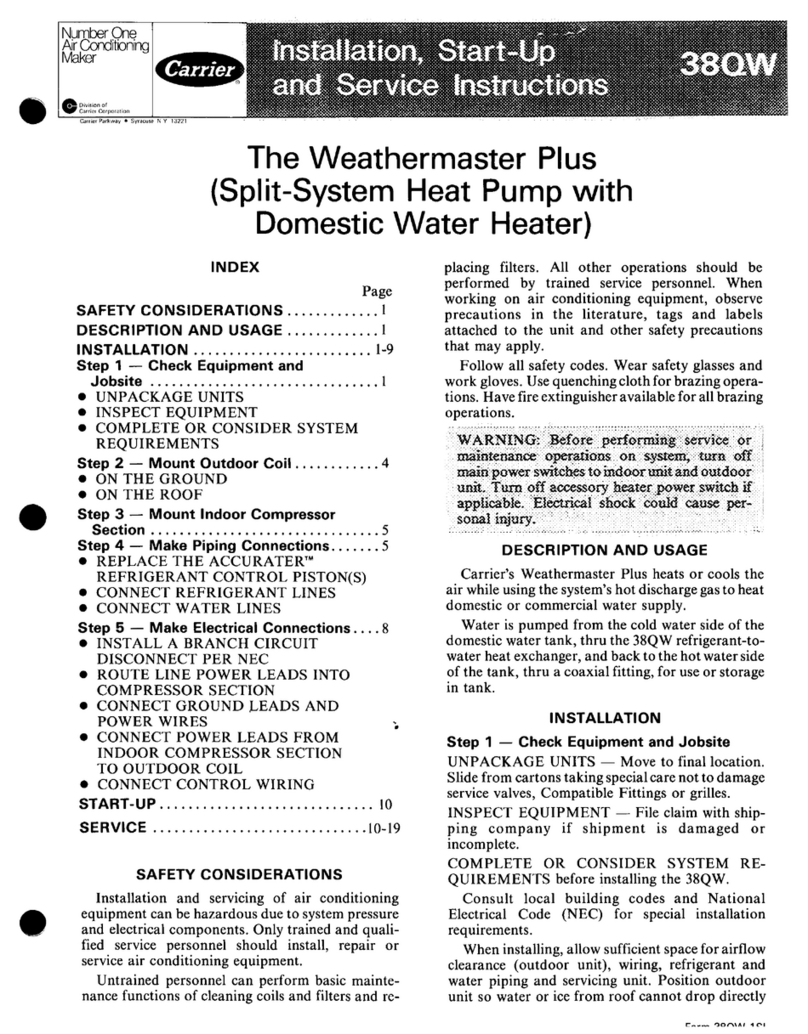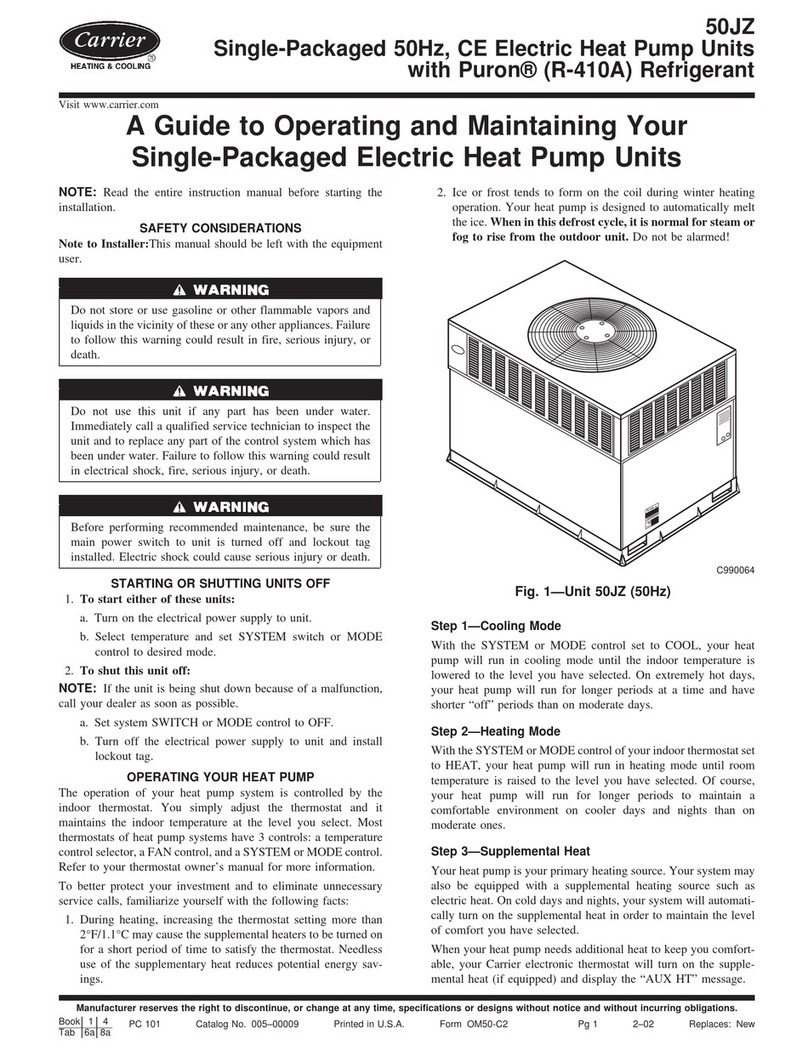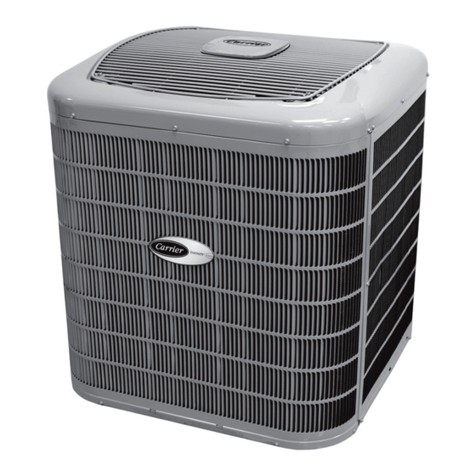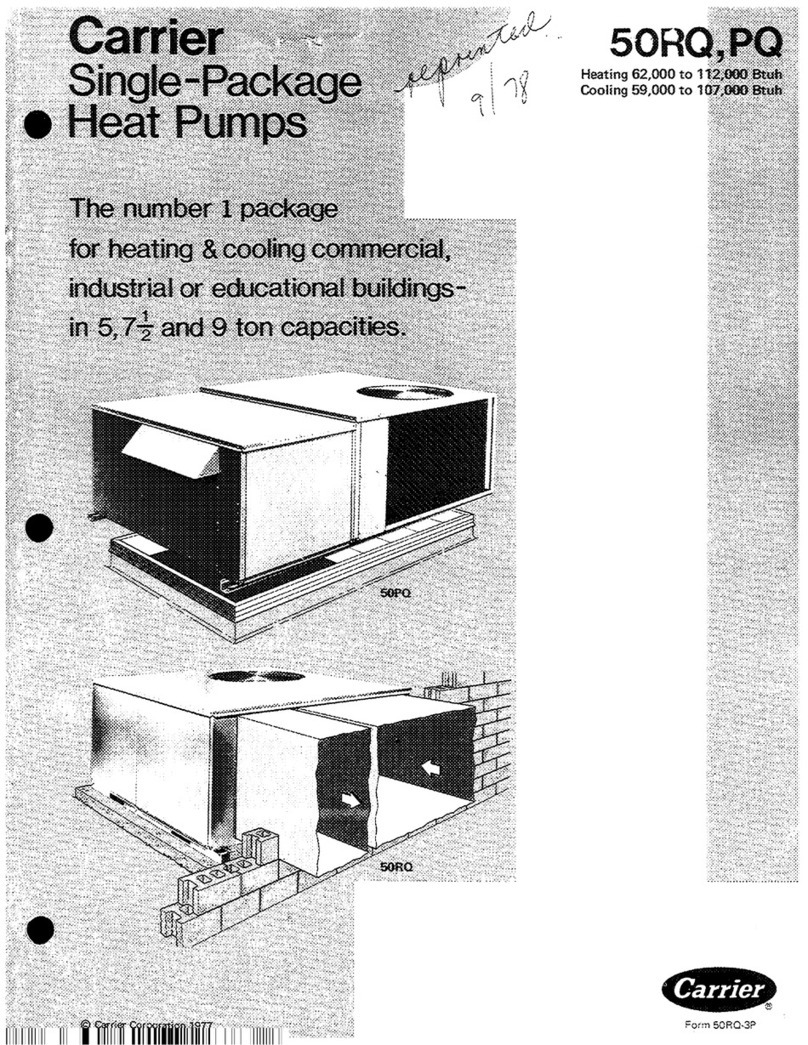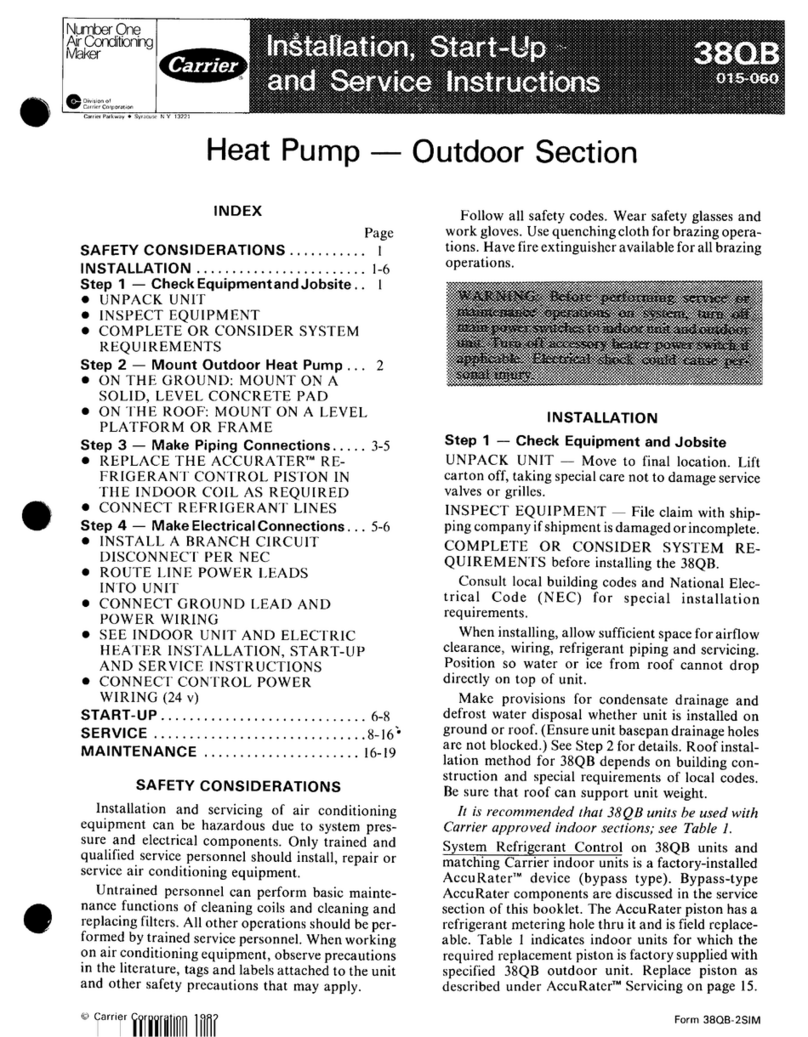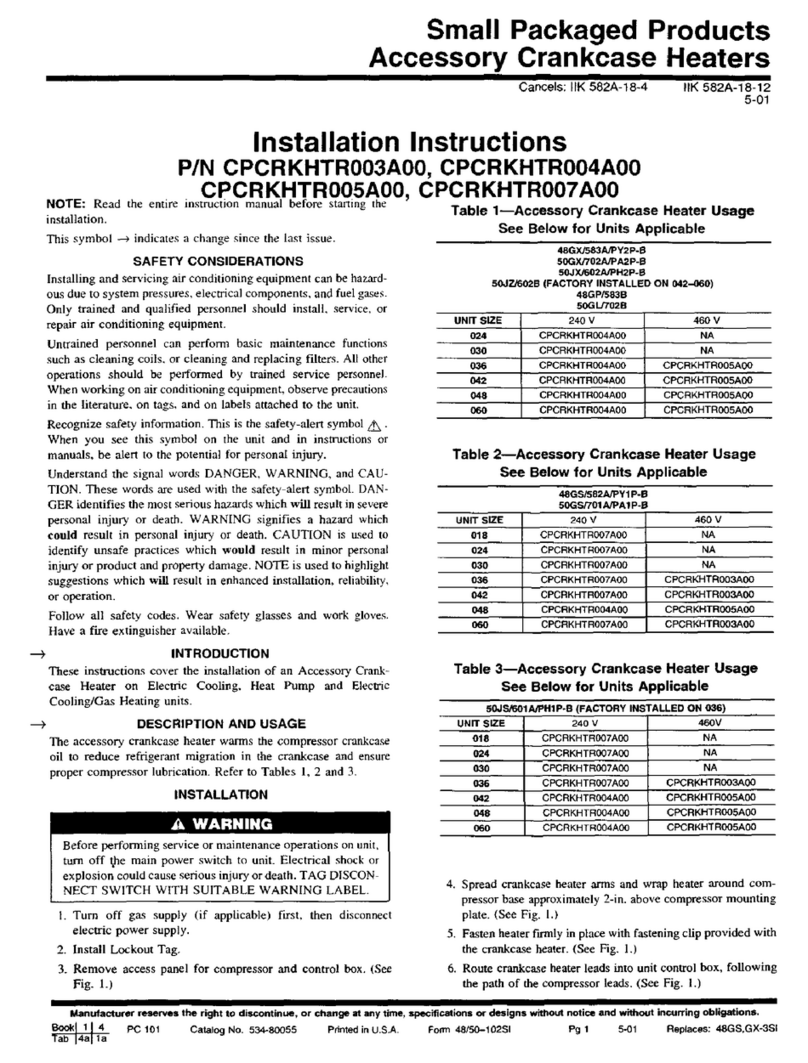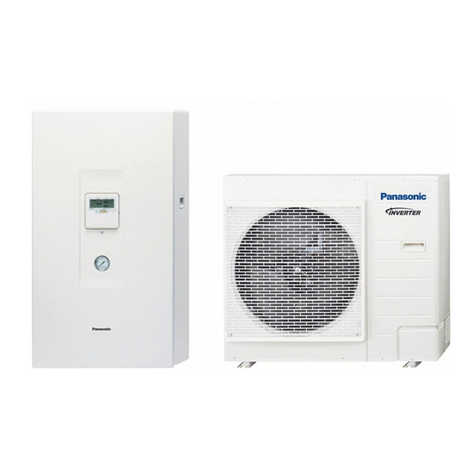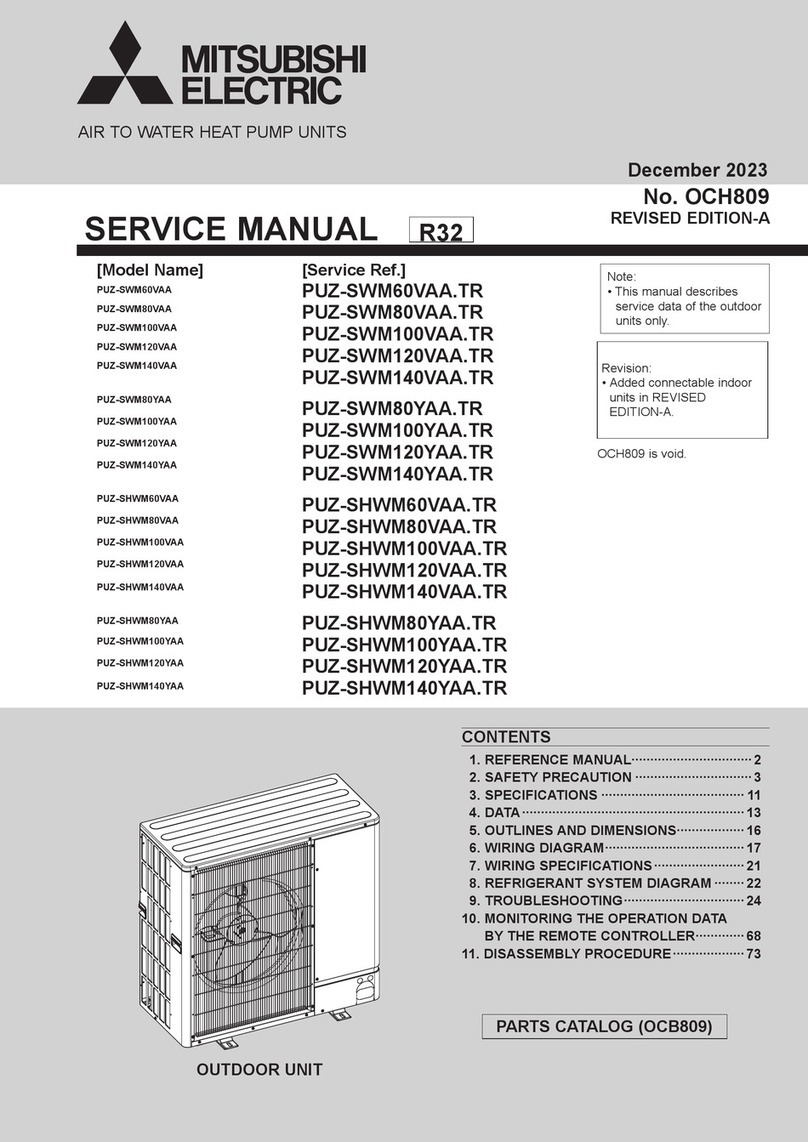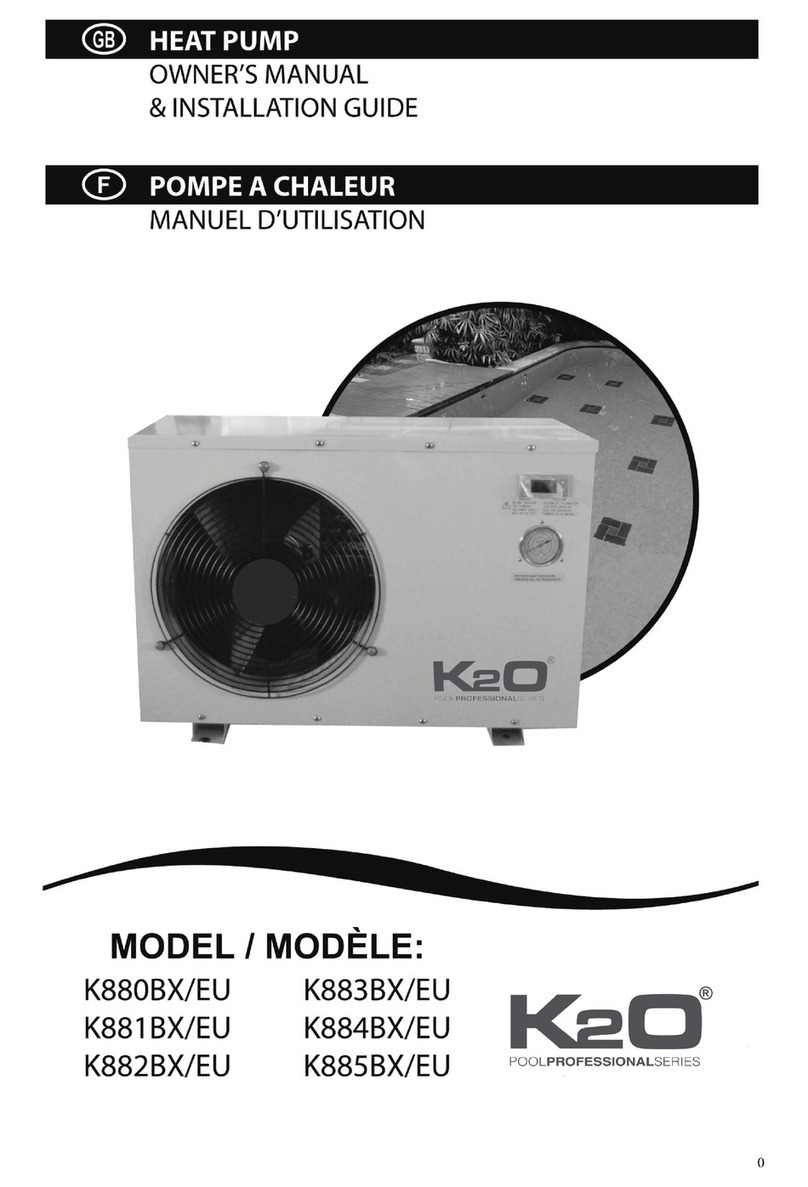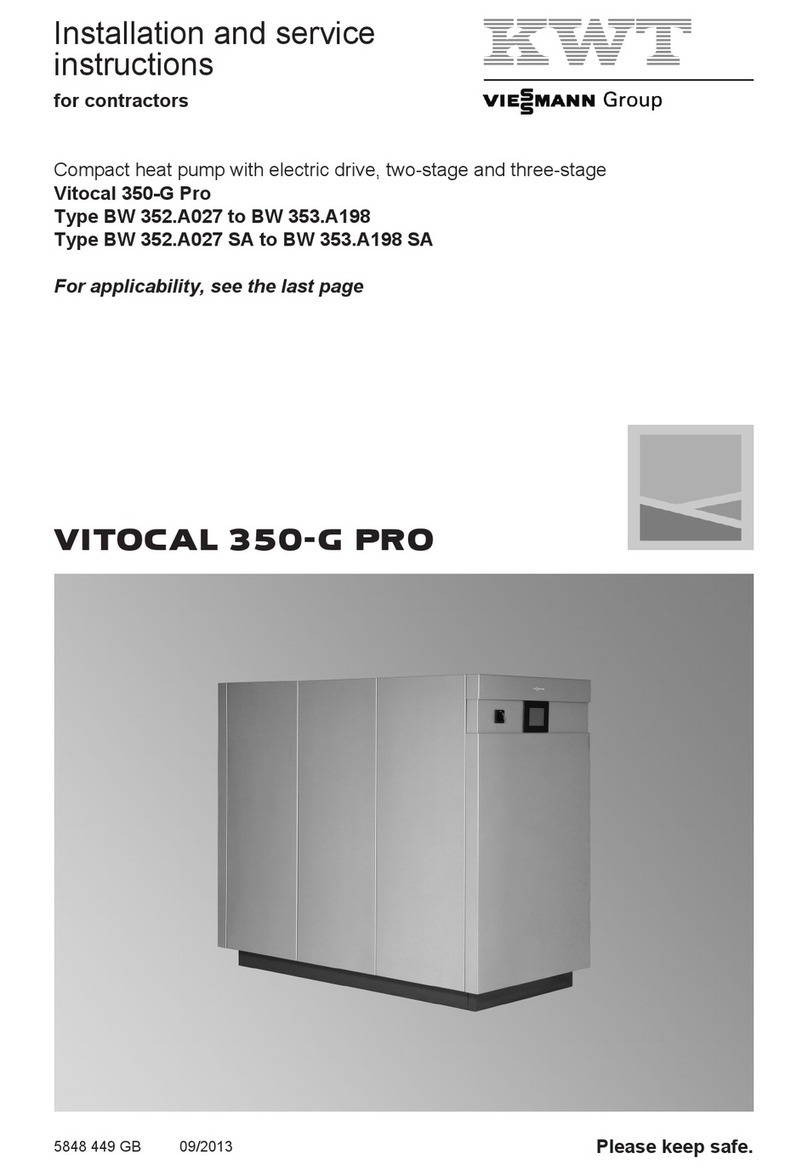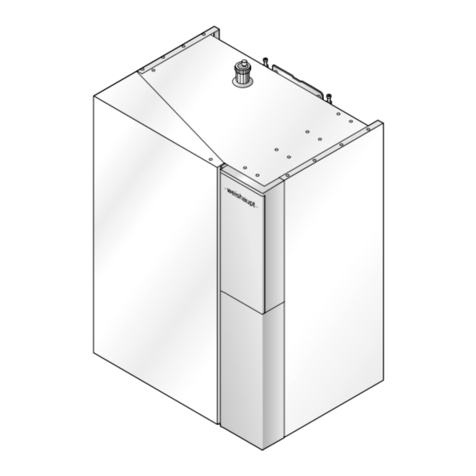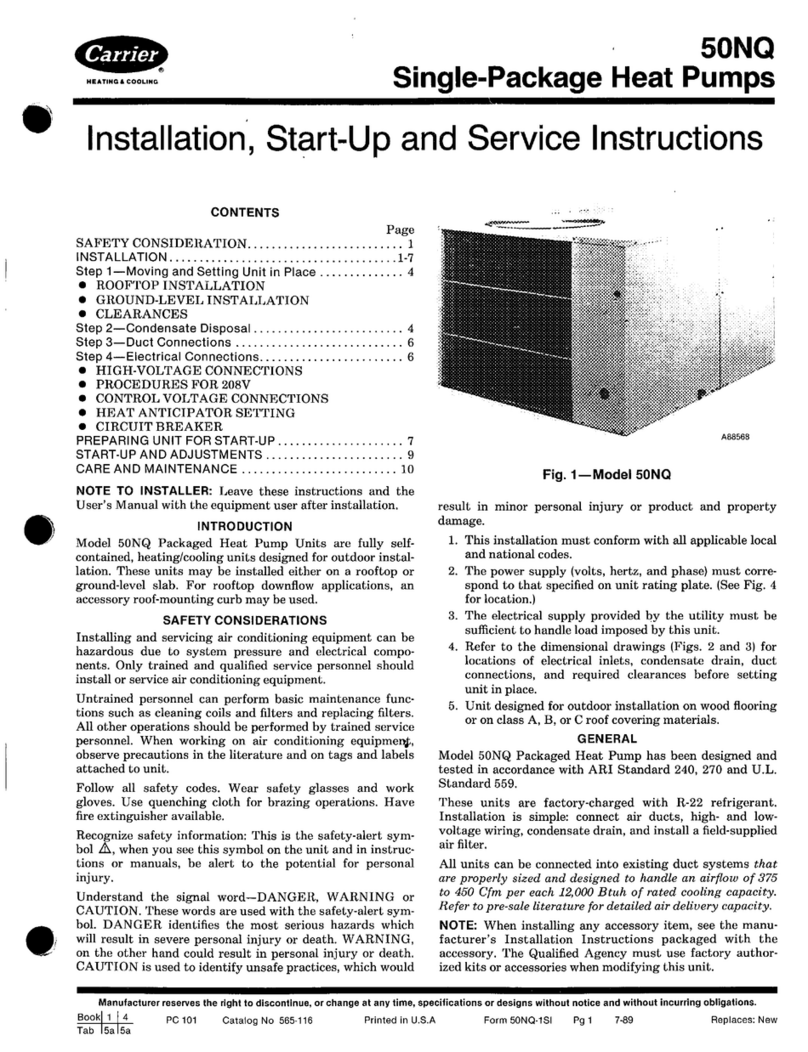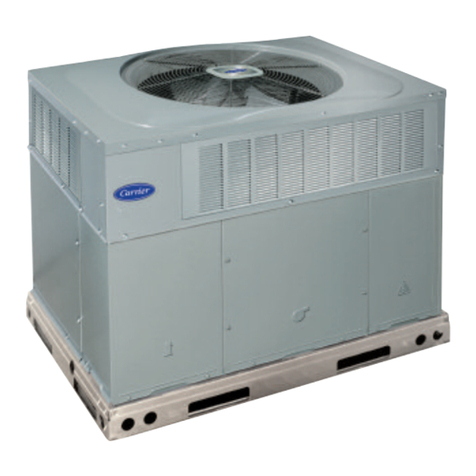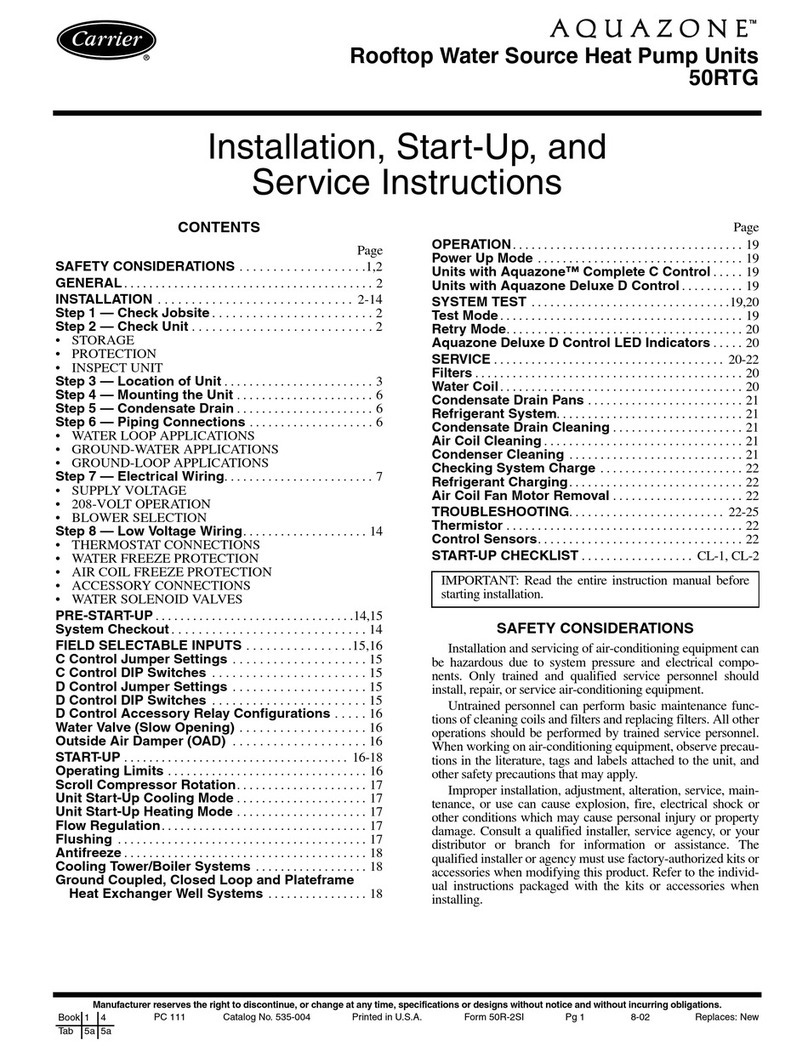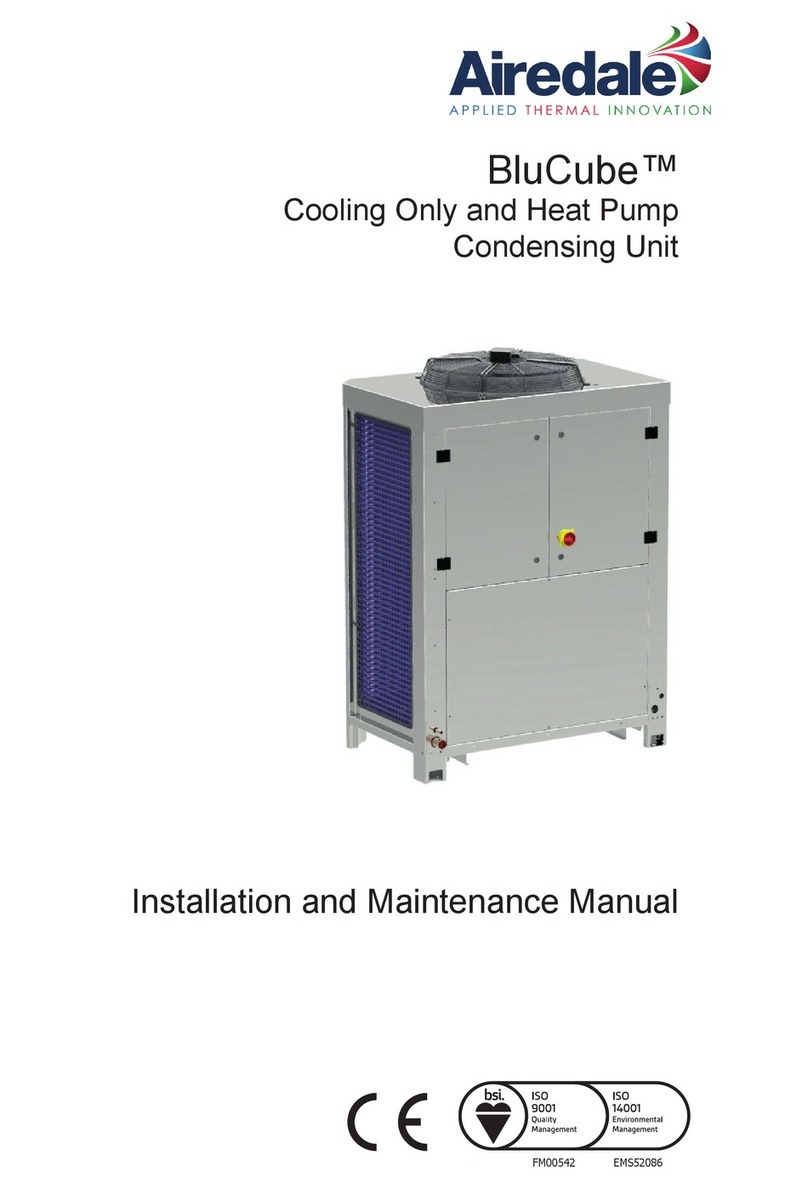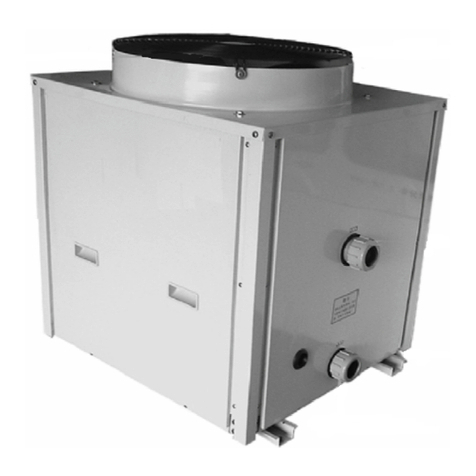
to remove the ice from the unit grille. This condition will not affect
the proper function of the unit and will clear within a few days.
Step 5—Emergency Heat Mode
This allows your supplemental heating source to keep your home
or office warm until your heat pump can be serviced.
IMPORTANT FACTS
To better protect your investment and to eliminate unnecessary
service calls, familiarize yourself with the following facts:
During heating, increasing the thermostat setting more than 2° may
cause the supplemental heaters to be turned on for a short period
of time to satisfy the thermostat. Needles use of the supplementary
heat reduces potential energy savings.
Ice or frost will tend to form on the coil during the winter heating
operation. Your heat pump is designed to automatically melt the
ice. When in this defrost cycle, it is normal for steam or fog to rise
from the outdoor unit. Do not be alarmed!
ROUTINE MAINTENANCE
All routine maintenance should be handled by skilled, experienced
personnel. Your dealer can help you establish a standard proce-
dure.
For your safety, keep the unit area clear and free of combustible
materials, gasoline, and other flammable liquids and vapors.
To assure proper functioning of the unit, flow of condenser air
must not be obstructed from reaching the unit. Clearance from the
top of the unit is 48 in. Clearance of at least 36 in. is required on
sides except the power entry side (42 in. clearance) and the duct
side (12 in. min clearance).
MAINTENANCE AND CARE FOR THE EQUIPMENT
OWNER
Before proceeding with those things you might want to maintain
yourself, please carefully consider the following:
1. TURN OFF ELECTRICAL POWER TO YOUR UNIT
BEFORE SERVICING OR PERFORMING MAINTE-
NANCE. ELECTRIC SHOCK COULD CAUSE SERI-
OUS INJURY OR DEATH.
2. When removing access panels or performing maintenance
functions inside your unit, be aware of sharp sheet metal
parts and screws. Although special care is taken to reduce
sharp edges to a minimum, be extremely careful when
handling parts or reaching into the unit.
AIR FILTERS — Air filters should be checked at least every 3 or
4 weeks and changed or cleaned whenever it becomes dirty. Dirty
filters produce excessive stress on the blower motor and can cause
the motor to overheat and shut down. Table 1 indicates the correct
filter size for your unit. Refer to Fig. 2 to access the filters.
To replace or inspect filters (or accessory filter rack when
supplied):
1. Remove the filter access panel using a 5/16-in. nut driver.
2. Remove the filters by pulling the filters out of the unit. If the
filters is dirty, clean or replace with new one.
When installing the new filters, note the direction of the airflow
arrows on the filter frame.
If you have difficulty in locating your air filter(s), or if you have
questions concerning proper filter maintenance, contact your
dealer for instructions. When replacing filters, always use the same
size and type of filter that was supplied originally by the installer.
Never operate your unit without filters in place. Failure to
heed this warning may result in damage to the blower motor
and/or compressor. An accumulation of dust and lint on
internal parts of your unit can cause loss of efficiency and, in
some cases, fire.
FANS AND FAN MOTOR — Periodically check the condition of
fan wheels and housings and fan-motor shaft bearings. No lubri-
cation of outdoor- or indoor-fan bearings or motors is required or
recommended.
INDOOR AND OUTDOOR COILS — Cleaning of the coils
should only be done by qualified service personnel. Contact your
dealer for the required annual maintenance.
CONDENSATE DRAIN — The drain pan and condensate drain
line should be checked and cleaned at the same time the cooling
coils are checked by your dealer.
COMPRESSOR — All compressors are factory-shipped with a
normal charge of the correct type refrigeration grade oil in them
and should rarely require additional oil.
CONDENSER FAN
Do not poke sticks, screwdrivers, or any other object into
revolving fan blades. Injury or equipment damage may result.
The fan must be kept free of all obstructions to ensure proper
cooling. Contact your dealer for any required service.
ELECTRICAL CONTROLS AND WIRING — Electrical con-
trols are difficult to check without proper instrumentations; there-
fore, if there are any discrepancies in the operating cycle, contact
your dealer and request service.
Fig. 2—Filter Access Panel—Vertical Supply
Shown
ACCESS PANEL
FILTER ACCESS
PANEL*
*For accessory filter rack.
Table 1 — Indoor-Air Filter Data
UNIT SIZE FILTER SIZE
50JZ024-030 20x20x1
50JZ036 20x24x1
50JZ042-060 24x30x1
2


